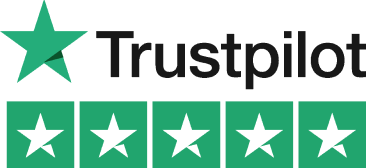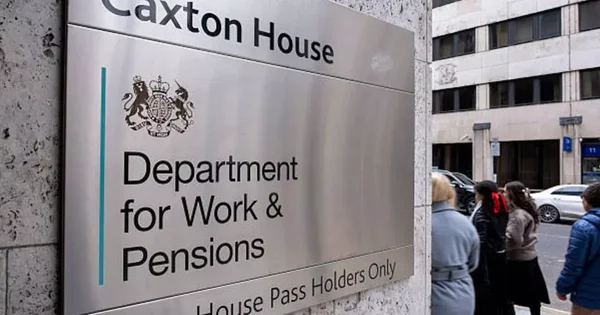Let’s Break This Down Together...
Thinking about investing in startups but not sure how SEIS tax relief actually works? You’re not alone, it’s a brilliant opportunity, but the jargon can make your head spin.
In this guide, we’ll unpack what SEIS is, who qualifies, and how to claim the generous tax benefits that come with it. We’ll also cover how it compares to EIS and the extra perks that protect your investment.
By the end, you’ll know exactly how to make SEIS work for you, boosting innovation while cutting your tax bill. Let’s dive in.
Supercharge Your Startup Investments
SEIS offers some of the most generous tax reliefs available to UK investors backing early-stage companies. With up to 50% income tax relief on investments up to £100,000 per tax year, it’s a powerful tool.
This scheme helps you support innovation while significantly reducing your tax bill. The benefits extend beyond income tax to capital gains, creating a comprehensive package. However, the specific benefits depend on your individual circumstances and the success of the investment.
Looking for a simple way to track your SEIS investments and maximise your tax benefits? The UK’s first personal tax app handles all the calculations automatically. Or if you’re just here to get to grips with it all, let’s break it down!
What Is SEIS and Why Should You Care?
The Seed Enterprise Investment Scheme (SEIS) is a UK government initiative designed to help small, early-stage companies raise funds. It offers substantial tax reliefs to investors who purchase new shares in qualifying businesses.
Launched in 2012, SEIS addresses the funding gap for startups at their riskiest stage. SEIS was introduced to stimulate economic growth by encouraging private investment in small businesses. Many promising ventures struggle to secure initial capital when they’re just getting off the ground.
For investors, it creates a win-win scenario. You can support innovative British businesses while enjoying some of the most generous tax breaks available anywhere.
Companies can raise up to £150,000 under SEIS. This makes it perfect for seed-stage funding rounds when businesses are testing their concept.

How SEIS Tax Relief Works
The headline benefit is the 50% income tax relief on your original investment. Invest £10,000 in a qualifying SEIS company, and you can reduce your income tax bill by £5,000.
You can invest up to £100,000 per tax year in SEIS companies. This means a maximum potential tax reduction of £50,000 annually, a substantial saving for higher-rate taxpayers. If you don’t have enough income tax liability in one year, there’s flexibility. You can carry the relief back to the previous tax year, maximising your tax advantage.
To retain this relief, you must hold the shares for at least three years. Sell earlier, and HMRC will reclaim the tax relief you received.
Capital Gains Tax Benefits That Sweeten the Deal
SEIS offers two valuable CGT benefits. First, any profit from SEIS shares held for at least three years is completely free from Capital Gains Tax.
Second, you can claim 50% CGT reinvestment relief when you put money from other gains into SEIS shares. This effectively halves the taxable amount of your original gain.
The following are examples of how SEIS relief works in practice: for example, if you’ve made a £20,000 gain elsewhere, reinvesting in SEIS would mean paying CGT on only £10,000. This can significantly reduce your overall tax burden.
These CGT benefits work alongside the income tax relief. Together, they create a powerful package of incentives that can transform the risk-reward equation.
Are You Eligible as an Investor?
To claim SEIS tax relief, you must be a UK taxpayer. You need sufficient income tax liability to offset against the relief you’re claiming. You can’t be “connected” to the company in certain ways. This means you can’t be an employee, a paid director, or hold more than 30% of the shares.
Your investment must be a genuine commercial venture. HMRC will reject arrangements designed purely for tax avoidance rather than business growth. The shares must be paid for in full, in cash, when they’re issued. They must be ordinary shares with no preferential rights to dividends or assets.
SEIS is especially attractive to experienced investors who understand the risks and rewards of early-stage investing.

What Makes a Company SEIS Qualified?
Not every startup qualifies for SEIS. The company's structure and financial status are key to SEIS eligibility. The company must be UK-based with a permanent establishment in the UK to be eligible.
SEIS qualifying companies must be less than two years old when issuing the SEIS shares. The business must also have fewer than 25 employees at that time. Companies that have received investment through the Enterprise Investment Scheme or a venture capital trust are not eligible for SEIS.
Its gross assets must not exceed £200,000 before the investment. This ensures the scheme targets genuinely small, early-stage businesses. The company must conduct a qualifying trade and be actively trading to qualify. Most normal business activities qualify, but some sectors like property development, financial services, and farming are excluded.
The shares issued under SEIS must be fully paid at the time of issuance to comply with scheme requirements.
Advance Assurance: Getting Pre-Approval for SEIS
Advance assurance is an important step for companies looking to raise funds under the Seed Enterprise Investment Scheme (SEIS). Essentially, it’s a way for companies to get pre-approval from HMRC, confirming that their planned share issue is likely to qualify for SEIS tax relief. This process gives both the company and potential investors greater confidence that the investment will meet the scheme’s requirements and that investors will be able to claim tax relief.
To obtain advance assurance, companies must submit a detailed application to HMRC. This typically includes a business plan, financial forecasts, and information about the company’s structure and intended use of funds. By securing advance assurance, companies demonstrate their commitment to following the rules of the enterprise investment scheme, making them more attractive to investors who want to minimise risks and ensure their investment is eligible for SEIS relief.
For investors, advance assurance provides peace of mind that their investment will qualify for the valuable tax reliefs offered by the scheme. For companies, it can be a powerful tool to attract investment and show they are serious about compliance. While not mandatory, advance assurance is highly recommended for any business seeking to raise funds under SEIS, as it streamlines the process and reduces uncertainty for all parties involved.

SEIS vs EIS: Which Scheme Is Right for You?
Both the Seed Enterprise Investment Scheme (SEIS) and the Enterprise Investment Scheme (EIS) are UK government-backed venture capital schemes designed to encourage investment in early-stage businesses. However, there are important differences between the two that can influence which is best for your company or investment strategy.
SEIS is tailored for the earliest-stage companies those just starting out, with smaller size and lower gross assets. It offers some of the most generous tax reliefs available, including 50% income tax relief and full capital gains tax exemption on profits from SEIS shares. This makes SEIS particularly attractive for investors seeking high growth potential and significant tax advantages when backing innovative startups.
EIS, on the other hand, is designed for slightly more established businesses that have moved beyond the initial seed stage. While EIS offers a lower rate of income tax relief (30%), it allows for larger investments and supports companies with higher growth ambitions and greater capital needs. EIS also provides capital gains tax exemption and other benefits, but is best suited for businesses that have already demonstrated some traction.
When deciding between SEIS and EIS, consider your company’s age, size, and growth potential. SEIS is ideal for very early-stage startups, while EIS may be more appropriate for businesses ready to scale. For investors, both schemes offer valuable tax reliefs, but the choice depends on your risk appetite and investment goals.
Consulting with a financial advisor can help you determine which scheme aligns best with your objectives and the stage of the business you’re considering.
Risk and Loss Relief: Protecting Your Investment
Investing in early-stage companies through the Seed Enterprise Investment Scheme (SEIS) can be rewarding, but it’s not without risk. Startups are inherently unpredictable, and not every company will succeed. To help offset this risk, SEIS offers loss relief a valuable safety net for investors.
If a company fails and your SEIS investment results in a loss, you can claim loss relief to reduce your income tax bill or offset capital gains tax. This means you can deduct the loss (after accounting for any income tax relief already received) from your taxable income or capital gains, helping to cushion the financial impact. This feature makes SEIS particularly attractive for those willing to support innovative startups, as it reduces the downside if things don’t go as planned.
In addition to loss relief, SEIS provides a capital gains tax exemption on profits from qualifying investments, further enhancing the scheme’s appeal. By taking advantage of these tax reliefs, investors can manage their risk exposure and potentially maximise returns, even in the high-risk world of early-stage investing.
Understanding the tax rules and how to claim these reliefs is essential for making the most of your SEIS investments and protecting your capital.

Claiming Your SEIS Tax Relief
After investing, you’ll need an SEIS3 certificate from the company. This usually arrives after the company has traded for at least four months and applied to HMRC. I remember the excitement of receiving my first SEIS3 certificate. After backing a promising fintech startup, that document transformed a risky investment into a tax-efficient decision almost overnight.
You claim the relief through your Self Assessment tax return. Claims are made by submitting the SEIS3 compliance statement to HMRC, which supports your eligibility for the relief. This can be done either in the tax year you made the investment or carried back to the previous year.
Don’t worry if you’re late with your claim. You have up to five years after the January 31st Self Assessment deadline to submit it. Many investors and companies get “advance assurance” from HMRC before proceeding. While not mandatory, it provides confidence that the investment will qualify for relief.
Final Thoughts
SEIS represents one of the UK's most generous tax incentives. It's specifically designed to encourage investment in high-potential early-stage startups. The combination of 50% income tax relief, CGT exemption on profits, and reinvestment relief creates a significant buffer. These benefits help offset the inherent risks of backing young companies.
Remember though, tax benefits should complement good investment decisions, not drive them. Always assess the business proposition first and consider the tax advantages as a bonus.
For the right investor supporting the right company, SEIS can dramatically improve returns. It simultaneously helps fund the UK's next generation of business success stories.
Pie tax: Simplifying SEIS Investment Tax
Tracking SEIS investments becomes straightforward with the UK’s first personal tax app. Pie tax eliminates the complexity that often accompanies tax-efficient investing.
Our real-time dashboard shows your SEIS tax position throughout the year. We automatically calculate your available allowances and relief, so you always know where you stand. The investment tracker monitors holding periods for your SEIS shares. This ensures you don’t accidentally trigger relief clawback by selling before the three-year minimum period.
We’ll send timely reminders when it’s time to claim your tax reliefs. Our step-by-step guidance makes the process clear, even for first-time SEIS investors.
Take a look at Pie tax to see how we can make your SEIS investment journey smoother and more rewarding.

Quick and Easy Guide to Adding SEIS Tax Relief in the Pie App
Follow these easy steps to ensure your tax reliefs are accurately recorded for your self-assessment:
To add SEIS tax relief, simply tap ‘Quick Add’ on the home screen of the Pie Tax App. From there, select ‘Add Tax Relief’, then choose ‘Tax Relief Investment Schemes’.Step 1

Next, select the specific investment relief you want to claim. Enter the name of the investment, the amount, and the date the investment was completed.Step 2










